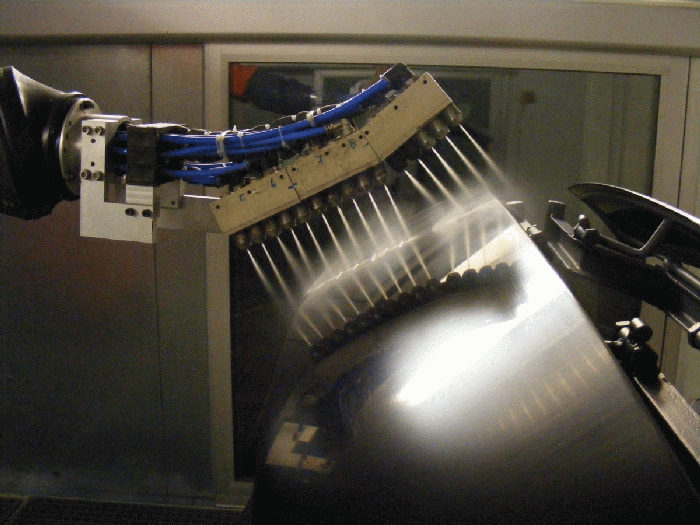Power washing sinks, ‘snow jet’ soars in BMW’s paint line
Lower costs, a more environmentally sustainable process, improved quality, plus a reduced footprint, are among the reasons BMW cites for its switch from a powerwash system to a CO2 "snow jet" system. The equipment is used to clean exterior plastic parts before applying a primer.
January 21, 2010
Lower costs, a more environmentally sustainable process, improved quality, plus a reduced footprint, are among the reasons BMW cites for its switch from a powerwash system to a CO2 "snow jet" system. The equipment is used to clean exterior plastic parts before applying a primer.
 So far the carmaker has made the change at its factory in Landshut, Germany, with the snow jet systems supplied by acp (advanced clean production GmbH; Esslingen, Germany). A further benefit of the new equipment is an increase in design freedom.
So far the carmaker has made the change at its factory in Landshut, Germany, with the snow jet systems supplied by acp (advanced clean production GmbH; Esslingen, Germany). A further benefit of the new equipment is an increase in design freedom.
This is because water-drawing component geometries and the associated displacement of media to painting processes are no longer a problem as far as the efficient dry-cleaning technique is concerned.
Powerwash cleaning is the long-established means of cleaning plastic exterior automotive parts before they are painted. The Landshut factory finally decided to switch away from wet-chemical processes because it wanted to reduce energy and water consumption and wastewater production, and also to increase cost-effectiveness and component quality.
CO2 snow jet technology from acp is a dry process. The jet uses a supersonic two-component cleaning head. Liquid carbon dioxide expands on exiting the jet's nozzle to form a mixture of snow and gas, creating a core jet. Compressed air is then added as a jacketed jet to accelerate the tiny, non-abrasive snow crystals to supersonic speed.
The small size of the cleaning head means the jet works well when cleaning even component cavities and undercuts such as those found in fenders, rear and side panels and spoilers. Particulate and filmy contamination is removed without leaving any residue.
For serial operation, the CO2 cleaning system (see photo) has been designed to clean components of all shapes and sizes made of a range of different plastics. Working together, project members of the BMW works in Landshut and acp developed a system configuration customized for the OEM's spectrum of parts requiring cleaning. The result is a robot system fitted with three nozzle arrays, each containing five cleaning heads. Depending on the part to be cleaned, the arrays can be turned on and off individually, according to a component-specific cleaning program stored in the unit's control system. The arrays are supplied with liquid carbon dioxide and oil-free compressed air via an inner hollow supply system located inside the robot arm. The cleaning system has been integrated into a cabinet the size of a painting booth.
In early 2009 BMW introduced the new system in the primer line in Landshut, where several thousand parts are cleaned and painted every day in two-shift operations. Replacing the powerwash system with the snow jet process has freed space there for production and assembly tasks, making it possible for the carmaker to begin integrating different fender pre-assemblies in the Landshut works. An additional benefit of dry cleaning has been an increase in design freedom, as it no longer matters if exterior parts made of plastic have water-drawing geometries. The carmaker has already told acp it will order another dry-cleaning system for its topcoat line in Landshut. —[email protected]
About the Author(s)
You May Also Like


